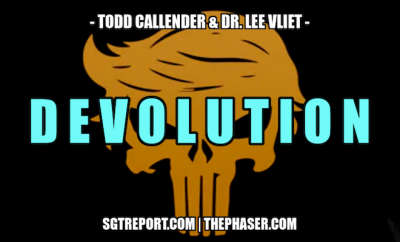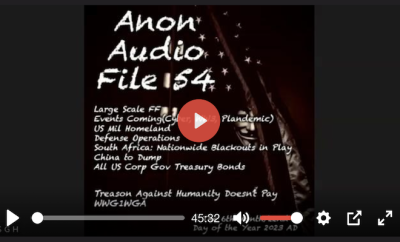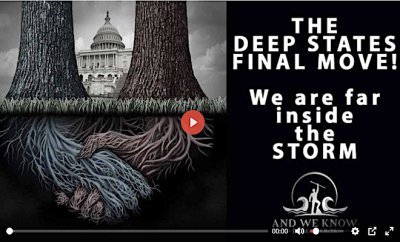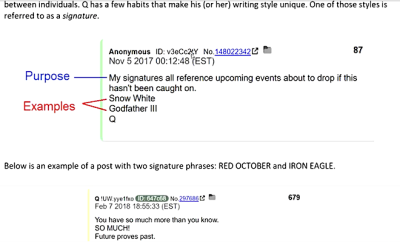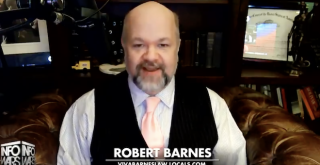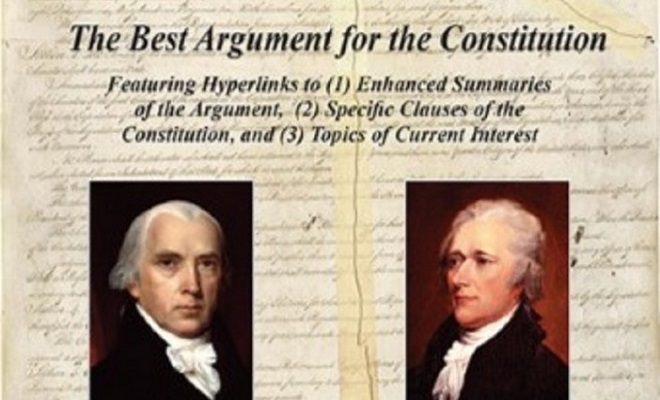 Veterans Today
Veterans Today
Featured
Part 5 America Who is behind the Convention of States Movement?
It is time to look at the people behind the movement to constitutionally wrest control of the federal government through the implementation of the amendment process, to restore constitutional rule of law as originally intended by the Founding Fathers.
by Ed Mattson, Veterans Today.com:
For the past several weeks I have taken an in depth look at a movement known as the Convention of States that is sweeping the country to grab the Washington establishment by the short hairs, making them accountable to the American public. For decades the voters have elected Republicans and Democrats to Congress and the Presidency to govern the United States under the Supreme Law of the Land. . . The U.S. Constitution . . . only to see nearly every rule, regulation, amendment, principle, and separation of power, perverted and then endorsed by the Supreme Court, in an effort to secure the never-ending quest for federal government power.
The Federalist Papers, yes all 85 of them, was a series of essays written by Alexander Hamilton, James Madison, John Jay, between 1787 and 1788, explaining the meaning behind the newly written U.S. Constitution, which contained only 4400 words, making it the shortest constitution of any major government on earth. Other governments have charters and constitution that are lengthy beyond description, in an attempt to micro-manage every aspect of their society, and in doing so, create a bureaucratic maze in the process. The brilliance of American politicians is that they figured out how develop a bureaucratic nightmare from a constitution that was only 4400 words long. . . so much for brevity. . . (The European Union Constitution is 855-pages long, containing 156,447 words and as muddled as one could make it).
The U.S. Constitution was created as theFRAMEWORK for government, containing the laws and guidelines required to set-up and run the U.S. Government. Besides outlining a limited number of powers to the central government, the Constitution spells out how government power would be equality delegated between the branches as a way to create a system of checks and balances, relegating all other powers to the states; and spelling out the rights all American citizens are guaranteed. The framework consists of three main parts: a preamble, 7 articles, and 27 amendments. The preamble states the purpose of the Constitution, and the Bill of Rights (the first 10 amendments), addresses the rights of every citizen.
It is truly a remarkable document. The big divide regarding the Constitution however, is in the interpretation of wording and the original intent of the Founders, and this is the source of confusion today. There are those called Originalists,who believe the best way to interpret the Constitution is to determine how the Founding Fathers meant for the document to be interpreted, relying on the writings of the framers, the newspaper articles of the day, the notes taken during the constitutional convention by James Madison (particularly the notes from the debates), and of course, on the published essays called the Federalist Papers.
One point that the Originalists insist and that there can be no doubt about, is the issue over the massive power/control that has been accumulated (and allowed to stand by Supreme Court decisions), which is truly contrary to the original meaning of enumerated powers. While some delegates to the Constitutional Convention advocated giving the federal government almost total power; including the ability to overrule or approve all state legislation, “most agreed that the United States was too large to follow the European model of central control and the interests of the people of the states would be best served by allowing considerable control of the law to remain with the states” (USConstitution.net).
Those who take a position opposite of the Originalists, believing the U.S. Constitution is a living, breathing document, say there is no one  right way to interpret it, and that people, including the Supreme Court, often do not always stick to one interpretation. I believe those who choose not to follow a road using strict interpretation are on a path liberals most famously always use against conservative thought, and that is, “a slippery slope”. From what I have read in reviewing the Federalist Papers, that the Framers were afraid of a strong central government because history had shown governments are never satisfied with limited power and will always seek more by any means possible.
right way to interpret it, and that people, including the Supreme Court, often do not always stick to one interpretation. I believe those who choose not to follow a road using strict interpretation are on a path liberals most famously always use against conservative thought, and that is, “a slippery slope”. From what I have read in reviewing the Federalist Papers, that the Framers were afraid of a strong central government because history had shown governments are never satisfied with limited power and will always seek more by any means possible.
The need to limit the power of the central government was specifically addressed by James Madison’s Federalist Paper #10 discussing Majority Rule in a Republic, and while it was felt a central government was essential to unite the states, the delegates knew such power needed to be checked:
“The truth of the matter is, the majority of the people does not ever actually rule except in a pure democracy . . . moreover, the American republic as created by the Constitution has certain limitations built into it which the people, in effect, have placed upon themselves that are not easily changed. This is especially needed for at least two reasons: (1) it being a representative democracy, the leeway which that form of government allows to the representatives is best kept in check to prevent their too easily adopting fundamental changes that might go beyond the wishes of the ultimate sovereign, i.e., the people; and (2) it is prudent that any fundamental changes be made slowly ‘to help ensure that they are not dictated by the passing whims of the moment’.”
The remedy to reign-in an out-of-control government was on the mind of Thomas Jefferson when he stated to David Humphreys in 1789, “Whenever our affairs go obviously wrong, the good sense of the people will interpose and set them to rights.” With all the apprehension that was voiced during the convention, I believe it is safe to say, the Supreme Court has been an enabler, granting the federal government far more power and control than what the Founders intended.
The delegates to the Constitutional Convention were not a bunch of Neanderthals or idiots, and the document they created foretold of  immeasurable wisdom which should be trusted by We the People. Those who believe in a strict interpretation of the Constitution as to being the best way of interpreting the wording are most astute. If one is looking for the meaning of the wording, who better to explain it than those who wrote it?
immeasurable wisdom which should be trusted by We the People. Those who believe in a strict interpretation of the Constitution as to being the best way of interpreting the wording are most astute. If one is looking for the meaning of the wording, who better to explain it than those who wrote it?
It is obvious that the Founding Fathers felt the framework of the Constitution was sufficient for running the country, and if we were to find ourselves in a situation that is not addressed adequately, or if, in the case of slavery, we find something to be totally amiss, we were given a mechanism of change through the amendment process. When Congress fails to recognize that need for change, then it is up to We the People to take matters into our own hands, constitutionally, to affect such change by calling for our own constitutional amendment convention to effect necessary change(s). The mechanism is a slow, deliberate process to prevent whim of the moment changes, and has been used 27 times in our history.
The Convention of States is a project of Citizens for Self-Governance. The national leadership is spearhead byMichael Farris, the Chancellor of Patrick Henry College and Chairman of the Home School Legal Defense Association, and Mark Meckler, an effective grassroots activist and the national coordinator of the Tea Party Patriots.
According to the Convention of States website, Mr. Farris is a constitutional appellate litigator, and has served as lead counsel in the United States Supreme Court, eight federal circuit courts, and the appellate courts of thirteen states. Farris received his B.A. in Political Science from Western Washington University. He later went on to earn his J.D. from Gonzaga University School of Law, and his LL.M. in Public International Law, from the University of London.
Mark Meckler serves as the key grassroots leader and appears regularly on wide variety of television outlets, including MSNBC, ABC, NBC, Fox News, CNN, Bloomberg, Fox Business and the BBC. He is an attorney who specializes in internet privacy law and also writes regularly on Breitbart, the American Spectator, and SelfGovern.com. These gentlemen are not lightweights in their knowledge of constitutional law and they are risking their futures to save the country from governmental suicide.
There are many other well-known champions of conservatism on the team, including former Arkansas Governor Mike Huckabee; Congressman Col. Alan West; Sen. Tom Colburn; Louisiana Governor, Bobby Jindal; Sen. Ron Johnson; and radio/television extraordinaire, Glenn Beck. While having a formidable number of recognizable figures involved, most important is to have the sound backing of the top legal minds in America which include:
Randy E. Barnett is the Carmack Waterhouse Professor of Legal Theory at the Georgetown University Law Center. Mr. Barnett directs the Georgetown Center for the Constitution and teaches constitutional law and contracts. He is a graduate of Harvard Law School, argued before the United States Supreme Court, and has been awarded a Guggenheim Fellowship in Constitutional Studies.
Charles J. Cooper is a founding member and chairman of Cooper & Kirk, PLLC. He was named by The National Law Journal as one of the 10 best civil litigators in Washington, and has over 35 years of legal experience in government and private practice, with several appearances before the United States Supreme Court and appellate levels. In 1998 Mr. Cooper was appointed by Chief Justice William H. Rehnquist to serve as a member of the Standing Committee on Rules of Practice and Procedure of the Judicial Conference of the United States.
Dr. John C. Eastman served as the Dean of the Chapman University Fowler School of Law from June 2007 to January 2010, and is the Founding Director of the Center for Constitutional Jurisprudence, a public interest law firm affiliated with the Claremont Institute. He too, has an exemplary record in major civil and constitutional litigation at both the trial and appellate levels. earned his Juris Doctorate from the University of Chicago Law School, where he graduated with high honors in 1995. His background includes serving as a law clerk with Justice Clarence Thomas at the Supreme Court of the United States and with Judge J. Michael Luttig at the United States Court of Appeals for the Fourth Circuit. Dr. Eastman also has a Ph.D. and M.A. in Government from the Claremont Graduate School.
Robert P. George is the founding director of the James Madison Program in American Ideals and Institutions; is chairman of the United States Commission on International Religious Freedom (USCIRF), and holds Princeton’s celebrated McCormick Chair in Jurisprudence. He has served on the President’s Council on Bioethics and as a presidential appointee to the United States Commission on Civil Rights. He has also served on UNESCO’s World Commission on the Ethics of Science and Technology, of which he continues to be a corresponding member. Professor George is a former Judicial Fellow at the Supreme Court of the United States, where he received the Justice Tom C. Clark Award. Dr. George is a graduate of Swarthmore College and Harvard Law School, where he also received a master’s degree in theology from Harvard to go along with a doctorate in philosophy of law from Oxford University.
Boyden Gray was appointed U.S. Ambassador to the European Union and U.S. Special Envoy for Eurasian Energy. Mr. Gray served as Legal Counsel to Vice President Bush (1981-1989) and as White House Counsel in the administration of President George H.W. Bush (1989-1993); counsel to the Presidential Task Force on Regulatory Relief during the Reagan administration; and is the recipient of the Presidential Citizens Medal from President George H.W. Bush and the Distinguished Alumnus Award of the University of North Carolina Law School. Gray graduated from Harvard with a Bachelor’s degree magna cum laude and received his Doctorate from the Law School of the University of North Carolina at Chapel Hill, where he was Editor in Chief of the Law Review. Following his graduation from university, he served in the U.S. Marine Corps. After law school, he clerked for Earl Warren, Chief Justice of the United States Supreme Court (1968-69). Today Dr. Gray currently serves on the faculty of the NYU law school
Mark Levin is one of America’s best known conservative commentators and constitutional lawyers. Mark is the author of several New York Times bestselling books including Men in Black (2007), Liberty and Tyranny (2010), Ameritopia (2012) and The Liberty Amendments (2013). Mr. Levin has become an outspoken critic of the current administration regarding President Obama’s flagrant abuses in his use of executive orders in violation of constitutional law. Mr. Levin is a contributing editor for National Review Online, and currently practices law in the private sector, heading up the prestigious Landmark Legal Foundation in Washington DC.
Andrew McCarthy is a bestselling author, and Senior Fellow at National Review Institute. He is also a contributing editor at National Review; a well-known commentator on legal, national-security, and political affairs; and is probably best known as the former Chief Assistant U.S. Attorney in New York, for leading the prosecution against the “Blind Sheik” (Omar Abdel Rahman) and eleven other jihadists for waging a terrorist war against the United States–including the 1993 World Trade Center bombing and a plot to bomb New York City Landmarks. After the 9/11 attacks, he supervised the U.S. Attorney’s command-post near Ground Zero, and later served as an advisor to the Deputy Secretary of Defense. McCarthy did his undergraduate work at Columbia College, received his J.D. from New York Law School, and has served as a professor there, as well as at Fordham University Law School.
The management of the Convention of States movement is in good hands.
Read More @ Veterans Today.com








